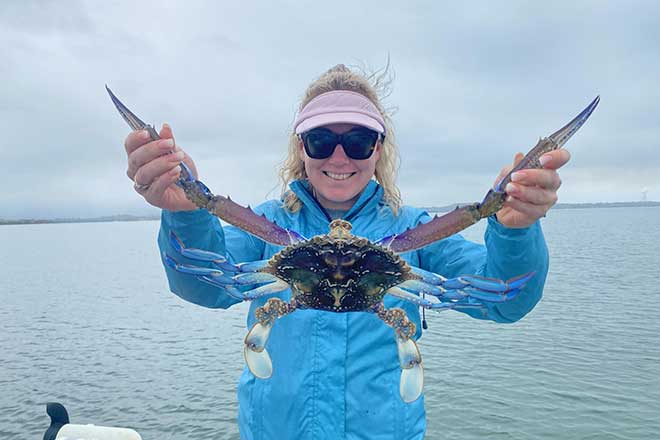Crab fishing is a popular activity, particularly during the warmer months and with summer around the corner there is no better time to brush up your knowledge on ways to help minimise your environmental impact when out crab fishing with our new responsible crabbing series.
It is important to know that not all crab fishing gear performs in the same way. Choosing gear types that are the most environmentally responsible may not only reduce the risk of interacting with non-target wildlife but can also limit the chances of your gear becoming lost and continuing to ghost fish.
Bycatch, ghost fishing and marine debris
Compared to other gears, lift nets and round crab traps with small entrances are considered to have a lower risk of wildlife bycatch. Due to the “open” design, and with the mesh laying on the seabed, lift nets are likely to have the lowest bycatch overall and have limited ghost fishing capacity.
Round crab traps have smaller entrances than the large, rectangular, open ended crab traps which means it is much less likely for non target wildlife to be able to swim inside and become stuck.
Of all the gear types, witches hats are most likely to have their meshes broken by crabs (leading to lost mesh and marine debris) and injure undersized crabs due to their limbs becoming entangled.

Effectiveness at catching crabs
Research has also shown that both lift nets and round traps are very effective for catching crabs.
Provided they are actively fished (lifted every 30 mins), lift nets have been found to be at least equally effective at catching mud crabs and more effective at catching blue swimmer crabs than witches hats.
Round traps have also been found to be more effective at catching crabs than rectangular traps.
This research shows that not only are lift nets and round traps more environmentally responsible than the other nets and traps, they also are more effective at catching crabs. This means they are a win for crab fishers and the environment!

Remember to select the most environmentally responsible gear and familiarise yourself on how to use it before crab fishing this summer!
If you don’t have the most environmentally responsible gear type yet – there are a simple tricks you can do to modify your gear to improve its environmental performance.
For more responsible crab fishing tips visit the DPI website.
 Bush 'n Beach Fishing Magazine Location reports & tips for fishing, boating, camping, kayaking, 4WDing in Queensland and Northern NSW
Bush 'n Beach Fishing Magazine Location reports & tips for fishing, boating, camping, kayaking, 4WDing in Queensland and Northern NSW









Where are all the mud crabs this season ?